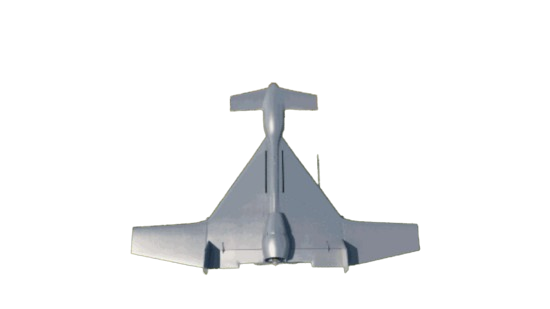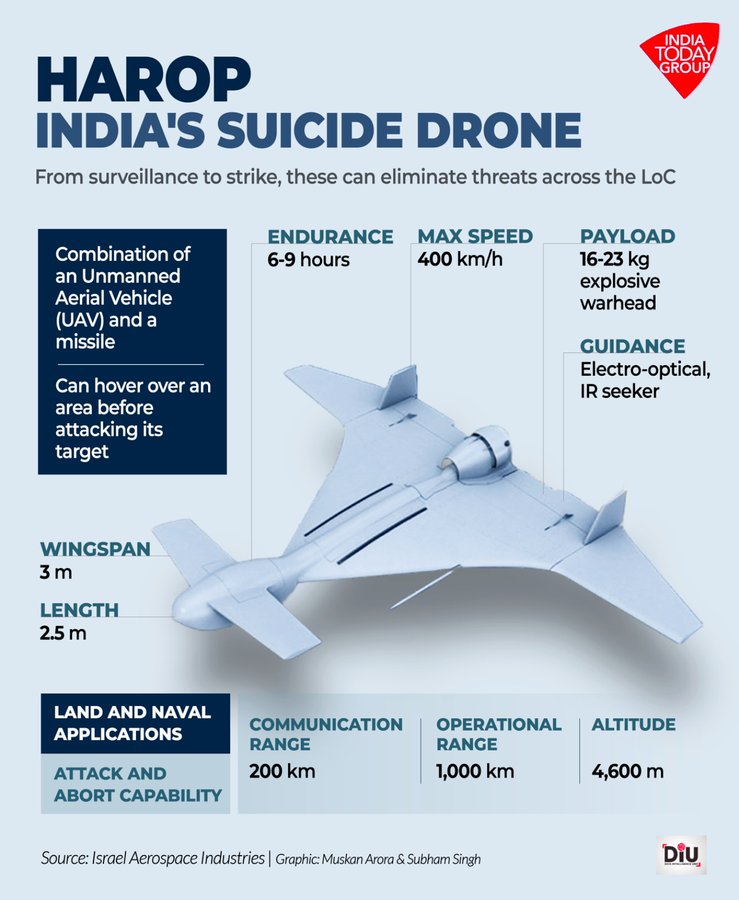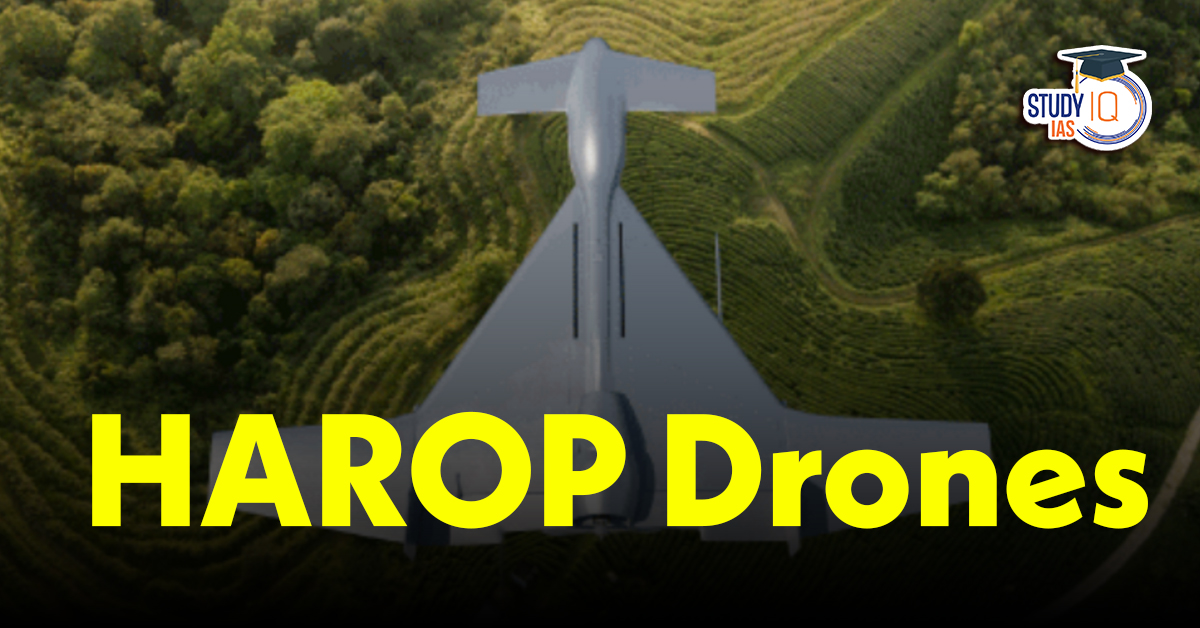Table of Contents
In the recent India-Pakistan escalation, the Indian Military used Israeli-origin Harop drones during Operation Sindoor. The drones were used to attack and destroy Pakistani air defence systems, including a main facility in Lahore. It has been battle-tested and utilised by various countries, such as India and Azerbaijan, with cited high mission effectiveness. Read this article to know all about the HAROP Drones, their uses and capabilities in detail.
Indian Armed Forces Deployed Israeli-origin Harop Drones
In retaliation for the April 22 terrorist attack in Pahalgam, Jammu and Kashmir, killing 26 civilians, India carried out Operation Sindoor. During this operation, Harop drones were used to carry out precision attacks on Pakistani air defence infrastructure. Targets ranged from installations in major cities like Lahore and Karachi.

The deployment of Harop drones by India marks a milestone towards the adoption of sophisticated unmanned systems in contemporary warfare. Their deployment during Operation Sindoor indicates India’s emphasis on developing its precision strike capacity and disabling adversary air defences with the least risk to manpower.
What Are Harop Drones?
Israel Aerospace Industries (IAI) developed the Harop Drones is a loitering munition, a drone-missile hybrid. Intended for Suppression of Enemy Air Defences (SEAD) missions, it will loiter autonomously over an area of interest, scan for radar emissions, and dive bomb onto the source, annihilating it with a 23 kg warhead. The Harop has a “man-in-the-loop” control system, which enables the mission to be aborted or rerouted mid-air.
Loitering Munition Meaning
Unlike conventional drones that are mainly used for reconnaissance or the delivery of guided missiles, the Harop is intended to loiter over a battlefield for a long time, searching, identifying, and then striking targets on its own. This makes it both a UAV (Unmanned Aerial Vehicle) and a missile.

Operational Advantages of Harop Drones
- Precision Strikes
- Suppression of Enemy Air Defences (SEAD)
- Engagement of Diverse Targets
- No Prior Intelligence Required
- Cost-Effective
- Pilot Safety
Key Features of Harop Drones
| Features | Details |
| Suicide Drone or Kamikaze Drone | Because of its method of operation of impacting the target with an explosive warhead, it is also known as a kamikaze or suicide drone. |
| Autonomous and Man-in-the-Loop Control | It can be fully autonomous to find and strike targets or be remotely controlled (man-in-the-loop) by an operator who may command targets on the basis of the drone’s electro-optical (EO) sensor input. The operator may also command an attack to be aborted in flight if needed. |
| Endurance | Up to 6-9 hours’ flight duration, allowing wide-area surveying and penetrating-depth strikes. |
| Range | Up to 200 km operational range from the point of launch, with a standoff launching distance of up to 1,000 km. |
| Speed | Has a maximum speed of up to 417 km/h. |
| Payload | Carries a 23 kg high-explosive warhead to destroy high-value targets. |
| Launch Platform | It is fired from canisters on ground vehicles or naval ships, which is highly deployable on most terrains and environments. |
| GNSS Jamming Immunity | The Harop is also built to be immune to Global Navigation Satellite System (GNSS) jamming, providing guaranteed operation in enemy electronic warfare environments. |
| Anti-Radar Homing Capability | Certain variants also have anti-radar homing, enabling them to autonomously intercept the enemy air defence radar systems. |
Role and Capabilities of Harop Drones
- Suppression/Destruction of Enemy Air Defences (SEAD/DEAD): The Harop is specifically designed to target and destroy enemy air defence systems such as radar sites and missile batteries.
- Precision Strikes on High-Value Targets: It can be employed against virtually any high-value military target, such as command centres, communications centres, tanks, armoured personnel carriers, and warships.
- Reconnaissance and Surveillance: Though mostly an attack drone, its loitering capability and EO/IR sensors enable it to be used for intelligence, surveillance, and reconnaissance (ISR) missions before attacking a target.
- Urban Warfare and Counter-Terrorism: Its precision targeting and abort capability make it ideal for urban warfare environments, as it reduces the risk of collateral damage.
Difference Between Conventional Drones and Harop Drones
The major Difference Between Conventional Drones and Harop Drones is based on their main purpose and mode of operation:
| Aspect | Conventional Drones | Harop Drones |
| Primary Role | ISR, Target Acquisition, Payload Delivery |
Attack (Self-Destructive), ISR
|
| Recoverability | Reusable | Expendable |
| Payload | Various sensors, external weapons |
Integrated Warhead
|
| Control | Primarily Remote Operator |
Autonomous & Man-in-the-Loop
|
| Operational Mode | Fly & Return | Loiter & Strike |
| Endurance/Range | Varies widely |
Long Loiter, Significant Range
|
| Survivability | Designed to Avoid Threats |
Stealth, Direct Attack
|
Essentially, whereas traditional drones are similar to reusable aircraft with sensors or weapons, Harop drones are similar to guided missiles with the capability to loiter and autonomously or semi-autonomously choose and attack targets. They provide a special capability for Suppression of Enemy Air Defences (SEAD) and precision attacks against high-value targets without necessarily needing pre-fed target coordinates.


 Theaterisation of the Indian Armed Force...
Theaterisation of the Indian Armed Force...
 Industrial Accidents in India: Reasons, ...
Industrial Accidents in India: Reasons, ...
 S-400 Missile Defence System, Features o...
S-400 Missile Defence System, Features o...

























